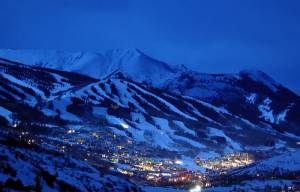Denver, CO – Ski resorts and western U.S. mountain destinations that participate in the Mountain Travel Research Program (MTRiP) received collective good news from the latest monthly report.
In the group’s Monthly Market Briefing released last Friday, actual occupancy for the month of November at 265 property management companies sampled in 15 mountain destination communities, representing 24,000 rooms across Colorado, Utah, California and Oregon, was up 4.5 percent compared to last November with the Average Daily Rate (ADR) up 4.6 percent. As of Nov. 30, on-the-books occupancy for December is up 11.3 percent compared to the same month last year while the ADR is up 3.4 percent.

Currently, on-the books occupancy for the remainder of the season and into the start of summer is just as cheerful for mountain resort communities with year-over-year occupancy currently up 10.4 percent for the next six months (December – May) with double digit increases in every month except March.
“The mountain travel industry continues to be relatively strong as we move into the full-blown winter booking season,” reports Ralf Garrison, director of MTRiP. “We’re seeing strong growth in both western and eastern regions and a nice continuation of the momentum that started building in early summer and carried into the fall booking season for many destinations.”
The monthly briefing also tracks and assesses national economic indicators and their potential impact on the ski, snowboard and mountain travel industry. For the first time in several years, the five indexes closely monitored by the MTRiP staff were described as positive.
The Dow Jones Industrial Average was up at the end of November for the second consecutive month as investor fears eased on news that central banks agreed to lower interest rates for European countries. Consumer confidence jumped 36 percent in November and the Unemployment Rate posted its second consecutive monthly drop down to 8.6 percent although the MTRiP analysts acknowledge that despite the creation of 120,000 new jobs, seasonal positions and fewer individuals seeking employment had an influence on the declining number.
“We will watch the unemployment figures closely over the coming months to track both seasonal employment and the conversion of those jobs into permanent positions,” explained Tom Foley, MTRiP’s operations director. “These numbers impact consumer confidence which in turn influences their spending patterns, including recreational travel.”
The Travel Price Index, which measures the average cost of travel related expenses, dropped for the third consecutive month—down 1.7 percent in November. Foley attributes this decline to the lower price of crude oil and fuel for air, rail and car travel. The Consumer Price Index also declined in October for only the second time since December 2009. “The decline in the cost of living is very timely as the economy moves into the critical holiday shopping season,” Foley added.
The briefing mentioned short-term concerns about current snow conditions in most regions of the country but noted that advance reservations remained strong through Nov. 30—the final date included for this summary.
“At this point, we are definitely feeling cheery about the economy as a whole and the continued strength of mountain lodging but it is still uncertain if this is a seasonal setting or the long-awaited recovery,” observed Garrison. “Either way, it is good for the ski industry and the economy as a whole.”

